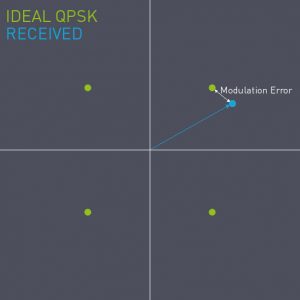Technology: Making the most of ATSC 3.0 MER measurements to evaluate reception quality

ATSC 3.0 introduction
ATSC 3.0, also known as NEXTGEN TV, is a TV broadcasting standard designed to offer support for newer technologies than previous ATSC standards. In particular, ATSC 3.0 offers support of HEVC/4K video channels and immersive audio, but will allow enabling targeted advertising and finer public alerting. With such a level of quality, viewers will always expect higher availability; broadcasters must then pay close attention to their content availability and quality of service.
See also: Edge Networks has selected ENENSYS to roll out Evoca, an Innovative American NEXTGEN TV Service
Technically speaking, the ATSC 3.0 modulated frame can be divided into 3 sub-parts:
- Bootstrap: mandatory for frame decoding, broadcasted using the most robust modulation techniques (usually QPSK)
- Preamble: mandatory for content decoding, bears signaling information about the content modulation
- Subframes: contain the content (PLP information), especially the audio and video data.
More technical details on ENENSYS’ website: https://www.enensys.com/technologies/atsc3-0/
Measure the right MER
Modulation Error Ratio (MER) measurements aim to quantify the quality of a digital TV transmission by expressing a value in dB. In a more graphical way, modulation errors are represented on constellation diagrams, as shown below:
For ATSC 3.0 transmissions, MER values can be calculated for different parts of the frame. MER for PLP data will represent decoded content quality, but it implies that the content can be actually decoded and that the L1 information is also well decoded. In addition, MER values can be calculated for L1-Basic and L1-Detail data.
As stated in the ATSC 3.0 standard (A/322), the frequency interleaver shall always be used for Preamble symbols. In addition, L1 signaling data cells are mapped to the Preamble symbols cells, meaning that L1-Basic and L1-Detail cells will be distributed among the whole ATSC 3.0 spectrum bandwidth.
Therefore, L1-Basic and L1-Detail information are robust against spectrum fadings; the associated data cells will be less impacted than if all data cells were grouped in the same spectrum area.
To sum-up: ATSC 3.0 reception can only be qualified by considering the three following MER values:
- MER based on PLP data
- MER based on L1-Basic data
- MER based on L1-Detail data
Practical example: TXID injection
A TXID is a Transmitter Identification signal that can be broadcasted in addition to the useful ATSC 3.0 signal, in particular during the 1st Preamble symbol containing L1-Basic and L1-Detail information.
By design, TXID signals must be injected at a high level: -18 to -9 dB in some configurations. Injecting the TXID at a level too high might result in receivers not being able to decode L1 signaling information, leading into A/V loss with direct impact on the viewer!
TXID broadcasting has no impact on the PLP data; therefore, if audio and video are not available due to L1 loss, the PLP-based MER does not reflect the L1 data degradation. In that case, the PLP-based MER does not provide any information related to the real root cause of the problem and technicians must refer to L1-based MER measurements.
ATSC 3.0 MER measurements in TestTree products
TestTree is a worldwide leading developer of test and monitoring equipment for broadcast networks. Its ATSC 3.0 T&M solution relies on ReFeree 3 for field coverage testing, EdgeProbe Advanced for 24/7 QoS monitoring at the transmission site and StreamProbe for OTT DASH QoS/QoE monitoring prior to the transmission.
Both ReFeree 3 and EdgeProbe Advanced are able to provide reliable RF measurements, in particular MER and constellation diagrams for L1-Basic, L1-Detail and PLP data. These measurements allow broadcast operators and stations to efficiently troubleshoot their ATSC 3.0 transmission both at the tower and in the field.


